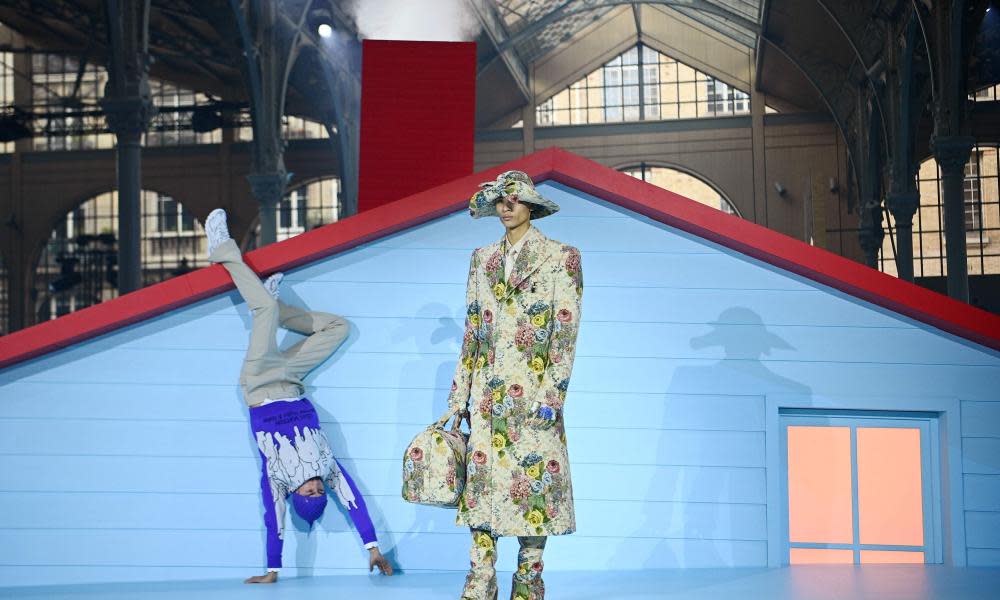Virgil Abloh’s final collection for Louis Vuitton debuts in Paris

If Paris fashion week can come with a festive gaudiness, the highly anticipated Louis Vuitton autumn-winter 2022 show – the last by its late artistic director, Virgil Abloh, who died in November, was delivered with a special serenity.
A revamped 19th century industrial building once entered, gave way to a majestic sky blue decor which served as a reminder of the celestial quality of Abloh’s work.
Aptly named “Louis Dreamhouse”, the space had been described by Abloh (according to the encyclopaedic notes of the show), as “a spark of imagination that turns into an eternal flame”.
The collection presented itself as a coming-of-age story, following, as the show notes point out, “the boyhood ideology, seeing the world through the unspoiled eyes of a child,” immersed in a dreamlike sound design crafted by Tyler, the Creator with arrangements by Arthur Verocai and performed by the Chineke! Orchestra.

The show alternated models and dancers, intertwining fashion runway and performances. A meeting between artifacts and archetypes, the garments re-encoded the wardrobes that had become quintessential to Abloh’s creative vision – tailoring, sportswear, skirts, hacked as only he knew how: this included cartoon characters emerging on knitwear and hoodies, as well as a graphic play with the Louis Vuitton monogram, visibly questioning the place of the logo in society.
The show made the most of the men’s suit, which appeared with extra wide shoulders, as if to question the superhuman and posthuman quality of the body; it came recomposed and revisited in a tapestry that skillfully mixed two opposite paintings, Gustave Courbet’s The Painter’s Studio, dating back to 1855, and Giorgio de Chirico’s Souvenir d’Italie from 1914. This, and the occasional cherub’s wings on a handful of models’ backs.
Related: Virgil Abloh – a life in pictures
Reflecting on issues of “originality, provenance, reference and self-reference,” Abloh also included a variety of dresses, full length ones with pleats and tulle, and even a bridal model, thus implicitly questioning the idea of gender – yet underscoring how much our binary view of the matter is anchored in western culture, by adding historically fluid caftans and djellabas.
As for accessories, Abloh’s knack for masculine it-bags was apparent in a variety of designs including climbing bags and rubberized crocodile bags, some filled with leather cut out flowers and others adorned in sequins.
All in all, they provided a sort of apotheosis of key leitmotifs of his previous work: mainly the hacking of masculine stereotypes and deconstructed cliches. All summed up in some of his most memorable quotes: “I’m not made for a podium but I’ll design a podium that ushers in systemic change,” he had once said. Mission accomplished.


